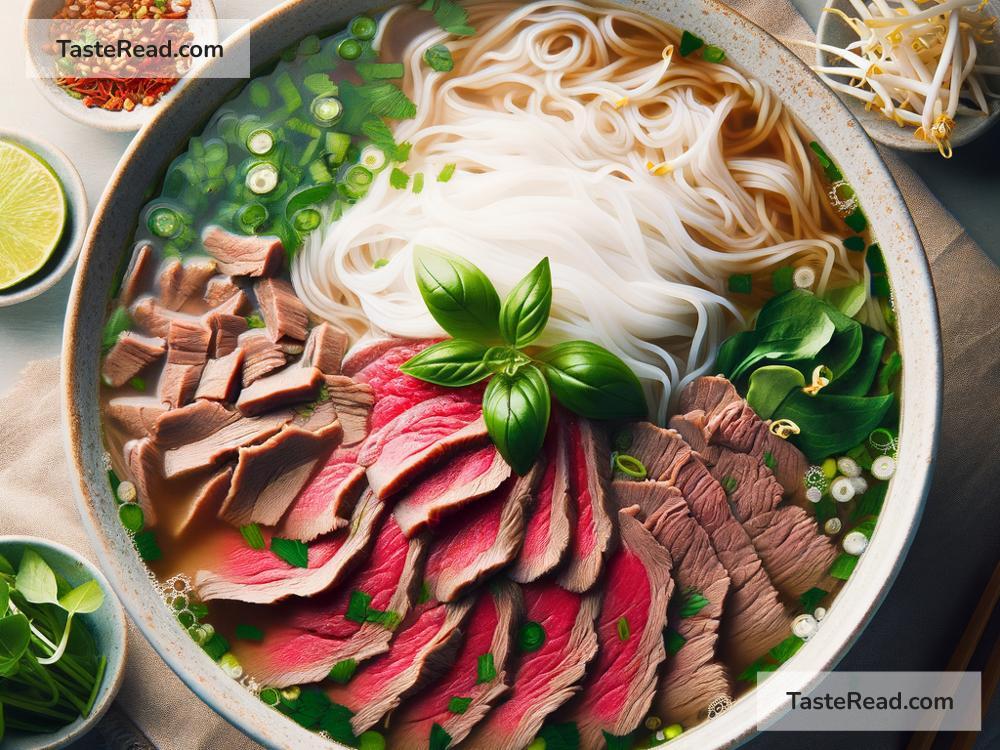How to Craft a Traditional Vietnamese Pho for Dinner
Vietnam’s most famous culinary export, Pho, has captivated the taste buds of people worldwide. This seemingly simple bowl of broth and noodles is a complex blend of flavors and textures, which together create a comforting and delicious meal. Whether it’s a cozy night in or you’re entertaining guests, crafting traditional Vietnamese Pho for dinner is a wonderful idea. Here’s how you can make this iconic dish in the comfort of your own kitchen.
What is Pho?
Before we dive into the recipe, let’s get a quick overview. Pho (pronounced “fuh”) is a Vietnamese soup consisting of broth, rice noodles, herbs, and meat, usually beef (Pho Bo) or chicken (Pho Ga). The magic of Pho lies in its clear, deeply flavorful broth, the quality of the meat, and the freshness of the herbs.
Ingredients
For the Broth:
– 1 large onion, peeled and halved
– 4-inch piece of ginger, halved lengthwise
– 3-4 lbs of beef bones (knuckles and marrow bones are great)
– Water
– 2 cinnamon sticks
– 3 star anise
– 4 cloves
– 3 cardamom pods
– 1 tablespoon coriander seeds
– 1 tablespoon salt
– 1 tablespoon sugar
– 1/4 cup fish sauce
For the Bowls:
– Rice noodles (banh pho), as much as you prefer
– Thinly sliced beef (eye of round, fillet mignon), or chicken breast if you’re making Pho Ga
– Toppings: Basil, cilantro, sliced green onions, bean sprouts, lime wedges, sliced chili, hoisin sauce, and Sriracha
Instructions
Step 1: Prepare the Broth
1. Begin your Pho by charring the onion and ginger. You can do this by placing them directly over an open flame on your stovetop or under a broiler. Char them for about 4-5 minutes, until they have a nice blackened exterior. This process will add depth to your broth.
2. Next, clean the beef bones. Put them in a large stockpot, cover them with water, and bring to a boil. Boil vigorously for 10 minutes. This step helps to remove impurities and ensures a clear broth. After 10 minutes, drain and rinse the bones with warm water, and clean your pot to remove any residue.
3. Return the bones to the pot, add about 4 quarts of fresh water, the charred onion, and ginger along with your spices (cinnamon, star anise, cloves, cardamom pods, coriander seeds), salt, and sugar.
4. Bring your broth to a boil and then reduce to a simmer. Allow it to gently simmer for at least 1.5 hours, better if you can let it go for 3 hours. The longer it simmers, the more flavorful it will be.
5. Around the 1.5-hour mark, add fish sauce to the broth. Continue to simmer. Once done, strain the broth through a fine-mesh sieve to remove solids. Taste and adjust seasoning with salt or fish sauce as needed.
Step 2: Prepare the Rice Noodles
1. While your broth is simmering, prepare the rice noodles according to the package instructions – usually soaked in hot water until soft. Drain them and set aside.
Step 3: Assemble the Pho
1. Arrange your toppings and sliced meats on a plate so everyone can customize their bowl.
2. To serve, bring the broth back to a simmer. Place a handful of noodles in each bowl. If you’re using raw beef slices, place them atop the noodles now, as the hot broth will cook them. If using cooked chicken, add that to your bowl now.
3. Carefully ladle the hot broth over the noodles and meat, ensuring the broth is hot enough to cook the meat through (if using raw beef).
4. Serve immediately with the plate of herbs, lime, bean sprouts, chili, and sauces on the side for everyone to customize their bowl of Pho.
Conclusion
Making Pho at home is a rewarding experience. It’s not just about the deliciousness of the meal but also the joy and comfort it brings to those who share it. Embrace the process, from simmering the broth to assembling the bowls. Each step is a layer of love and flavor. So gather your ingredients, invite your loved ones, and prepare for a dinner that promises not just to fill the stomach but to warm the heart. Enjoy your homemade Vietnamese Pho!


